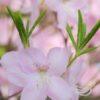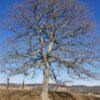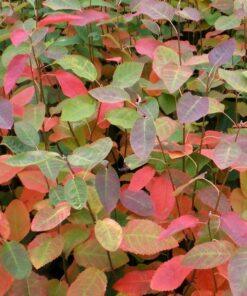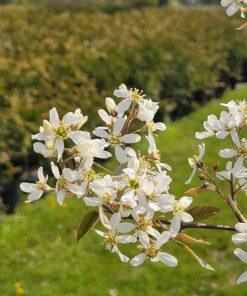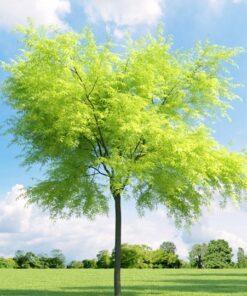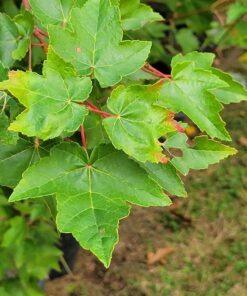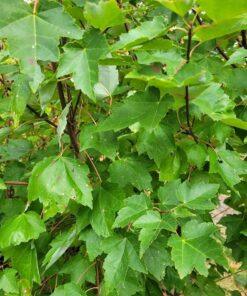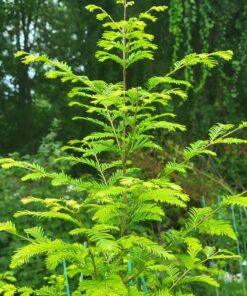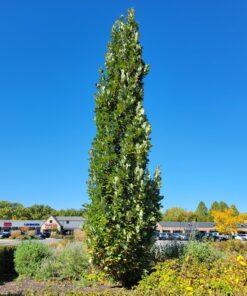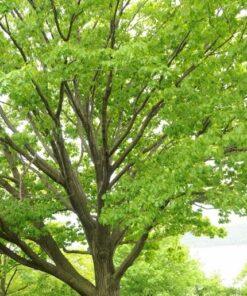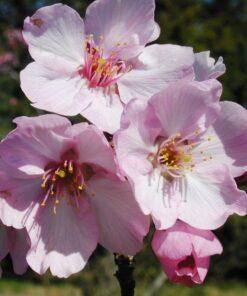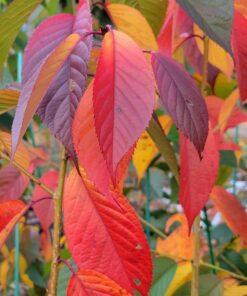Quercus bicolor, ‘Swamp White Oak’
$145.00 – $159.00
The swamp white oak has greater tolerance to wet areas and displays really beautiful multi-color leaves in the fall that are unique and inspiring. This is a beautiful tree to be seen and is native to USDA zones 3 – 9.
Related products
Native Trees
Amelanchier grandiflora, 'Autumn Brilliance'is a great native specimen producing white spring flowers and awesome fall colors for its multi-season display. These grow to 15' - 20' and are taller than wide. We grow single trunk specimens, but do have some multi-trunk as well. The Amelanchier looks great as a solo tree, or as part of a multi-specimen design. These are a truly very nice tree/ shrub and are fascination to see up close throughout the seasons. Autumn Brilliance puts on one of the best fall color displays of all of the serviceberry trees. It is a beautiful native flowering tree, and the birds love the berries that display in May/ June. It is a hard-to-find tree, and is also valuable as a wildlife tree because it attracts songbirds. It is also called June Berry, and has become one of our favorites.
The Honeylocust tree is an American native specie that is a favorite of an established landscape. It makes a great shade tree. They are hardy trees for zone 6, and will grow nicely in full sun to part shade. They are also great city street trees tolerating the summer heat well.
Shade Trees
Fairview Flame Maple tree is a fast growing red maple that has brilliant red leaves in the late fall. It has smaller leaves, and holds on to its leaves into late November.
Shade Trees
Dawn Redwood is a magnificent deciduous tree. It has gorgeous soft green needles, and is a fantastic and inspiring tree to see and grow. Dawn Redwood is a magnificent deciduous tree, and is a relative of the California redwood (Sequoia sempervirens) and giant sequoia (Sequoiadendron giganteum), diverging around 150 million years ago. Dawn redwood prefers a wetter environment to grow, and it needs full sun to grow its best when it is a larger tree. We start these as 'understory' trees and they love the high open canopy above them giving the good indirect light. It does best in moist to wet soils, so it can be a good choice for large rain garden locations. As with all trees a good organic planting location would be ideal for these trees.
Columnar Trees
The Columnar English Oak offers the beauty and elegance of the English Oak in a upright narrow columnar form that becomes the star of a landscape design when planted in symmetrical groups of three or five.. The juxtaposition of these trees planted in a design can be breathtaking. These gorgeous trees put the full beauty of the English Oak in an approachable height to see up close and personal. The tight narrow upright form allows one to approach the tree and closely observe the beauty and delicacy of its leaves, acorns, and branching.
Native Trees
A fast growing native American variety of Oak known for its bright red fall color. The Quercus rubra or Northern Red Oak is an excellent and very popular wildlife and native tree with many positive attributes including its fast growth, water tolerance, shade production and wildlife food for deer, squirrels, and wild turkey.
Flowering Trees
The Helen Taft Cherry tree is a fantastic flowering cherry tree variety named after a female trailblazer in the early 1900's who also happened to be the wife of President Howard Taft. She was one of the key people who helped create the Cherry Blossom arboretum along the Potomac river bordering Washington DC and Virginia. This specimen is a outstanding flowering tree specimen, and would look great in a grouping, or in a tree line! It is a deciduous upright tree with a spreading crown, reaching both a height and width of 20' x 25'+ after 25 years of growth. We find that this tree is very hardy with minimal problems with insects and disease. It is most comparable to its female parent, Prunus x yedoensis Yoshino, except for its slightly larger size and noticeably large pink flowers. This tree is a true winner, and we are quite impressed with its many positive characteristics. It is Highly recommended!


